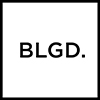The senior citizen population is growing rapidly thanks to the aging baby boomer generation. The 85-and-older age group — the bread and butter of senior housing — is expected to double over the next 20 years.
The cost of long-term-care insurance has skyrocketed due to factors as longevity and persistently low interest rates. That means, in many cases, an individual can no longer live alone or rely on a partner for care.
This will result in a huge flood of seniors looking for a variety of housing options, including active lifestyle living and even upscale urban apartments (especially as many seniors downsize). There are huge implications for housing, both in terms of renovations for those who want to age in place, and new options for seniors looking for a new post-retirement lifestyle.
The needs and likes of these age groups aren’t so varied with the millennial. In fact, it’s a migration back into cities and denser suburbs for an active, healthy lifestyle and readily available services.
And then there is a rethinking of senior housing at the personal level. Technology, especially leveraging the sharing economy, can help satisfy seniors who want to age in place or are demanding more from their assisted-living options.
Transportation-on-demand, dining-on-demand and online learning are all trends that really play well in the senior market. Giving priority to voice-first technology [over even mobile-first technology is tailor-made to serve seniors.
Many seniors prefer “aging in place” instead of moving in with family or packing up for multistage assisted living. “Aging in community” and the need for inclusion is more important. That’s because isolation is a serious health danger. It’s a bigger threat than obesity and smoking, and can double the rate of dementia, according to research and surveys.
There’s no doubt that senior housing will be a major growth industry over the coming decades. And there are likely to be growing pains along the way, as smart home technology and adoption can take a while with our aging adults.
